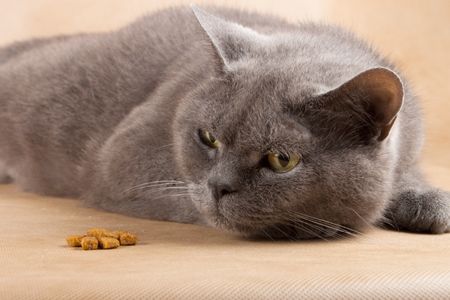Feeding finicky felines: Considerations from a veterinary nutritionist
Medical issues, social factors and normal aging can all hamper a cats appetite. Heres what to do when a cat wont eat.

Shutterstock.comIn her presentation “Feeding the Finicky Feline,” given during the 2016 American College of Veterinary Internal Medicine (ACVIM) Forum, Jessica Quimby, DVM, PhD, DACVIM, discussed the importance of nutrition in managing feline patients, including some of the obstacles we veterinarians face in encouraging cats to eat and strategies to overcome some of these hurdles.
Getting the whole picture
Dr. Quimby started by stressing the importance of making nutrition part of the patient assessment, calling it “the fifth vital sign.” She encourages practitioners to pay attention not only to the patient's weight but also to its body condition score, muscle condition and dietary history. Asking questions such as “How is your cat eating?” instead of “Is your cat eating?” can help you get more substantive information from clients with respect to intake.
Dr. Quimby also stressed the importance of client education about nutrition, particularly if there's a medical reason to change the diet. If you institute a diet change, it's important to follow up with the client to make sure the pet is eating the new diet well.
Physiologic changes may also have a dramatic impact on appetite, particularly in aging cats, Dr. Quimby noted. These include:
- A decrease in the sense of smell
- A decrease in stomach compliance (i.e., the stomach wall is less distensible)
- A decrease in pancreatic enzyme activity
- A decrease in the absorptive surface of the gut
- A decrease in bile flow.
In addition, as they age cats have an increased metabolic rate, which means their nutritional requirements will change.
So what can we do if a cat won't eat?
In addition to managing any underlying medical issues, clinicians need to consider other factors in patients with decreased or absent appetite. Cats are uniquely sensitive to their environment, Dr. Quimby noted. Social interactions with other cats, the location of the food and water dishes, and changes in the consistency of the food can all lead to changes in appetite. Elderly cats may benefit from having their food warmed to overcome their decreased sense of smell. Ill cats, on the other hand, may do better with chilled food that has less odor and may be less likely to induce nausea.
Medications for pain, nausea and appetite stimulation may also be considered for inappetent felines. Mirtazapine is a commonly used appetite stimulant, and Dr. Quimby notes that a daily low dose has been shown to be effective in cats with chronic renal disease.
In an effort to decrease the risk of creating a food aversion issue, Dr. Quimby warns that cats that are nauseated, gagging or turning away from food should not be forced to eat. A new diet should also not be started while the patient is in the hospital or while they are still ill.
Dr. Jennifer Garcia is a veterinary internal medicine consultant in Houston, Texas.